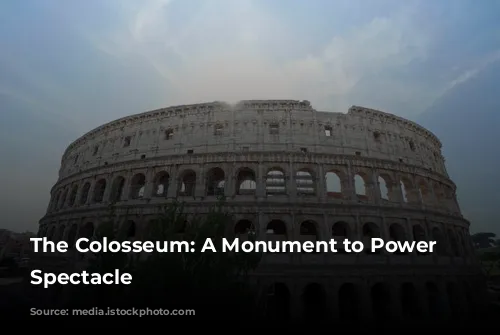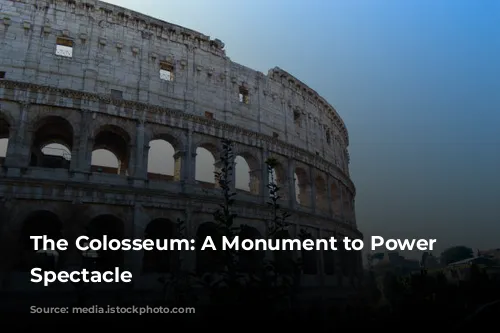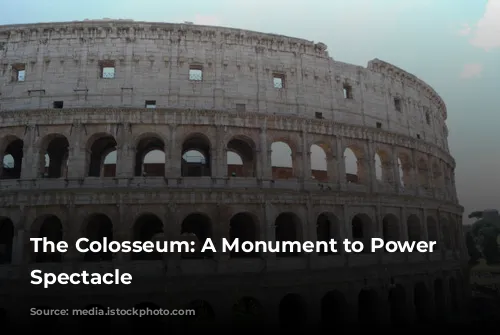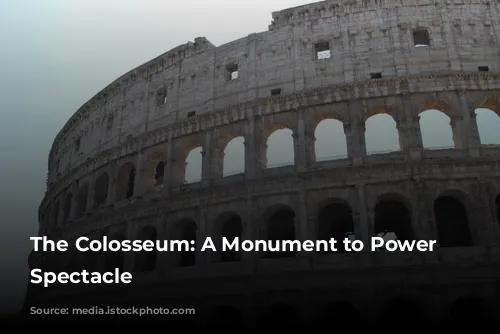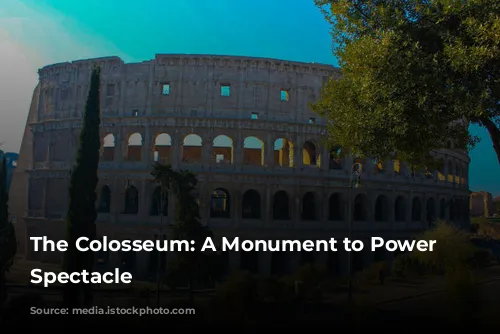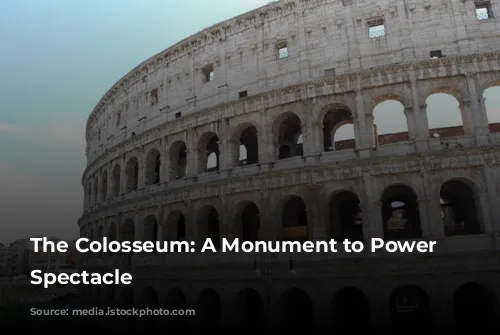The Colosseum, the world’s most iconic amphitheater, looms large over the cityscape of Rome. It was begun under the reign of Emperor Vespasian, a member of the Flavia family, and opened by his son, Titus, in the year 80 A.D. The grand opening was a lavish affair, lasting one hundred days. During this time, audiences were treated to spectacular displays of gladiatorial combat, animal hunts, and naumachiae, mock sea battles that brought the thrill of ancient naval warfare to life.
The Colosseum: A Name With A Story
But why is this monumental structure known as the Colosseum? This name appeared for the first time in a medieval prophecy by the Venerable Bede. He declared: “Rome will exist as long as the Colosseum does; when the Colosseum falls so will Rome; when Rome falls so will the world”. The name likely stemmed from the colossal statue of Emperor Nero, standing at a towering 35 meters tall, which once stood beside the amphitheater. This monument has since vanished, leaving only echoes of its past grandeur.
The Colosseum: A Masterpiece of Roman Engineering
The Colosseum stands as a testament to the Romans’ engineering prowess. Constructed in a remarkably short period of ten years, the amphitheater is a masterpiece of Roman architecture. Imagine this imposing structure, once gleaming white with travertine stone! The elliptical shape allowed it to hold an enormous audience. The monumental building boasted four floors, each with eighty arches, the second and third adorned with statues of immense scale.
The Romans’ mastery of the arch is evident in the Colosseum. The arch enabled them to distribute weight effectively, creating structures that were strong and lasting. This architectural principle is seen throughout Roman construction, from the aqueducts that carried water across the empire to the triumphal arches that celebrated military victories.
The Colosseum: A Source of Building Materials
Today, we see the Colosseum’s ruined exterior. While the inner arena is gone, the skeleton of the outer wall remains. Three-fifths of the brick surrounding wall is missing, a result of its transformation in the Middle Ages. During this time, the Colosseum was exploited as a quarry, providing materials for the construction of other Roman landmarks, including the Barberini Palace, Piazza Venezia, and even St. Peter’s Basilica.
The Colosseum: A Theater for the Masses
The Colosseum’s seating arrangement was carefully designed to provide a clear view for its 70,000 spectators. Social hierarchy played a significant role in where people sat. Roman citizens enjoyed free entry, but the best seats were reserved for the elite – senators, vestals, priests, and, of course, the emperor. The common people occupied the higher tiers, separated by gender.
The Colosseum: A Place of Entertainment and Spectacle
The Colosseum was more than just a building, it was a theater of entertainment. The Romans understood the importance of entertainment in diverting attention from political concerns. Games were held in the amphitheater throughout the day, providing an escape for the masses.
The Colosseum: Where Gladiators Battled for Glory
The arena, the focal point of the Colosseum, was a stage for gladiatorial combat. Underground cellars housed the machinery that brought surprise elements to the games, hoisting animals and gladiators up through trapdoors. Scenic backdrops were also raised using hydraulic systems.
The gladiators were a diverse group, ranging from prisoners of war to individuals seeking fame and fortune. They battled for the admiration of the crowds, saluting the emperor with the famous phrase, “Ave Caesar, morituri te salutant” (Hail Caesar, those who are about to die salute you).
The Colosseum: A World of Cruel Spectacle
The Colosseum was a place of violence, where blood flowed freely. Animal hunts and gladiatorial combats were the bread and butter of the shows. The smell of blood, burnt flesh, and wild animals permeated the air, an unavoidable reality of these spectacles.
The Colosseum: A Symbol of Faith
By the 6th century, the Colosseum had fallen into disuse and decay. Throughout the Middle Ages, it became a place of refuge, housing hermits, hospitals, and even a cemetery. In the 18th century, Pope Benedict XIV transformed the Colosseum into a sacred monument dedicated to the Passion of Christ, placing a cross on its pedestal. This act not only protected the monument from further destruction but also imbued it with new meaning, making it a place of pilgrimage for Christians.
The Colosseum: A Ghost of Ancient Rome
Today, the Colosseum stands as a powerful reminder of ancient Rome. It is a monument to Roman engineering, power, and the spectacle of entertainment. As Charles Dickens wrote, seeing the Colosseum is “seeing the ghost of old Rome floating over the places its people walk in”. The Colosseum is a must-see for anyone visiting Rome, offering a glimpse into the heart and soul of this ancient civilization.
